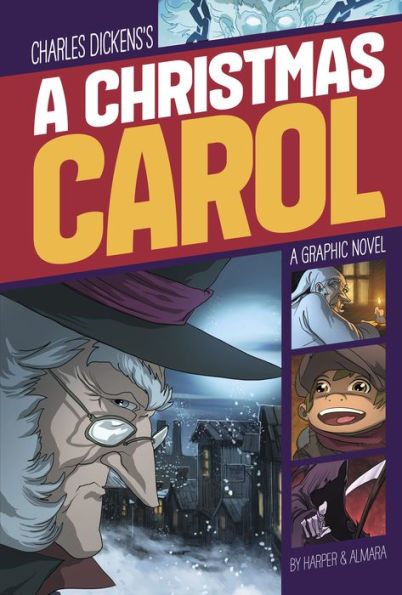If you plan on lining up to score some deals on Black Friday, you’re going to need a distraction to take your mind off the wait. Fiction is the perfect thing to focus your attention away from the other shoppers preparing to jockey for the items you want to buy, but it has to be just the […]
A Christmas Carol is a novella by Charles Dickens, first published in London by Chapman & Hall on 19 December 1843. The novella met with instant success and critical acclaim. Carol tells the story of a bitter old miser named Ebenezer Scrooge and his transformation into a gentler, kindlier man after visitations by the ghost of his former business partner Jacob Marley and the Ghosts of Christmases Past, Present and Yet to Come.The book was written at a time when the British were examining and exploring Christmas traditions from the past as well as new customs such as Christmas cards and Christmas trees. Carol singing took a new lease on life during this time. Dickens' sources for the tale appear to be many and varied, but are, principally, the humiliating experiences of his childhood, his sympathy for the poor, and various Christmas stories and fairy tales.Dickens' Carol was one of the greatest influences in rejuvenating the old Christmas traditions of England, but, while it brings to the reader images of light, joy, warmth and life, it also brings strong and unforgettable images of darkness, despair, coldness, sadness, and death. Scrooge himself is the embodiment of winter, and, just as winter is followed by spring and the renewal of life, so too is Scrooge's cold, pinched heart restored to the innocent goodwill he had known in his childhood and youth. A Christmas Carol remains popular-having never been out of print-and has been adapted many times to film, stage, opera, and other media.
1116639901
A Christmas Carol
A Christmas Carol is a novella by Charles Dickens, first published in London by Chapman & Hall on 19 December 1843. The novella met with instant success and critical acclaim. Carol tells the story of a bitter old miser named Ebenezer Scrooge and his transformation into a gentler, kindlier man after visitations by the ghost of his former business partner Jacob Marley and the Ghosts of Christmases Past, Present and Yet to Come.The book was written at a time when the British were examining and exploring Christmas traditions from the past as well as new customs such as Christmas cards and Christmas trees. Carol singing took a new lease on life during this time. Dickens' sources for the tale appear to be many and varied, but are, principally, the humiliating experiences of his childhood, his sympathy for the poor, and various Christmas stories and fairy tales.Dickens' Carol was one of the greatest influences in rejuvenating the old Christmas traditions of England, but, while it brings to the reader images of light, joy, warmth and life, it also brings strong and unforgettable images of darkness, despair, coldness, sadness, and death. Scrooge himself is the embodiment of winter, and, just as winter is followed by spring and the renewal of life, so too is Scrooge's cold, pinched heart restored to the innocent goodwill he had known in his childhood and youth. A Christmas Carol remains popular-having never been out of print-and has been adapted many times to film, stage, opera, and other media.
6.49
In Stock
5
1

A Christmas Carol
72
A Christmas Carol
72eBook
$6.49
$6.95
Save 7%
Current price is $6.49, Original price is $6.95. You Save 7%.
Related collections and offers
6.49
In Stock

Product Details
| ISBN-13: | 9781496524492 |
|---|---|
| Publisher: | Capstone Press |
| Publication date: | 08/01/2015 |
| Series: | Graphic Revolve: Common Core Editions |
| Sold by: | Barnes & Noble |
| Format: | eBook |
| Pages: | 72 |
| File size: | 150 MB |
| Note: | This product may take a few minutes to download. |
| Age Range: | 10 - 14 Years |
About the Author
What People are Saying About This
From the B&N Reads Blog
